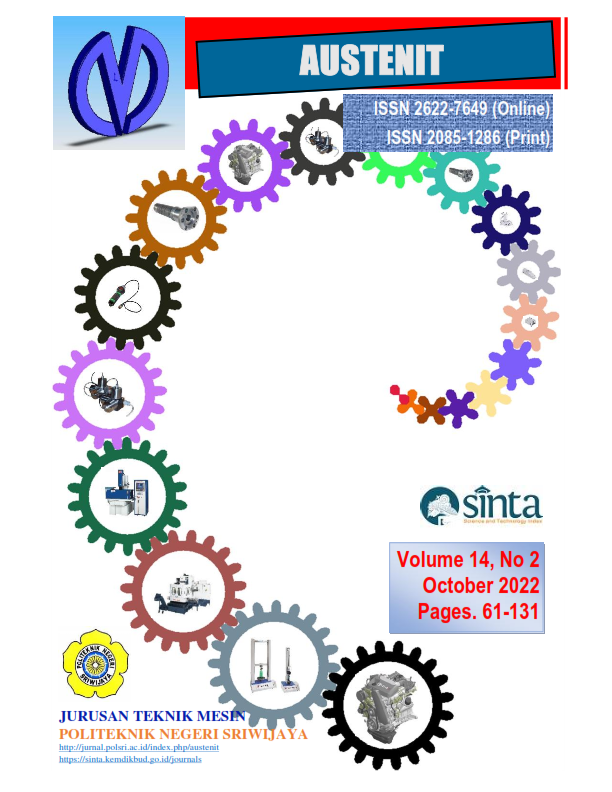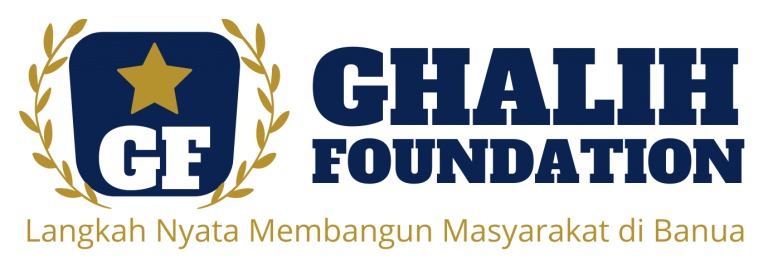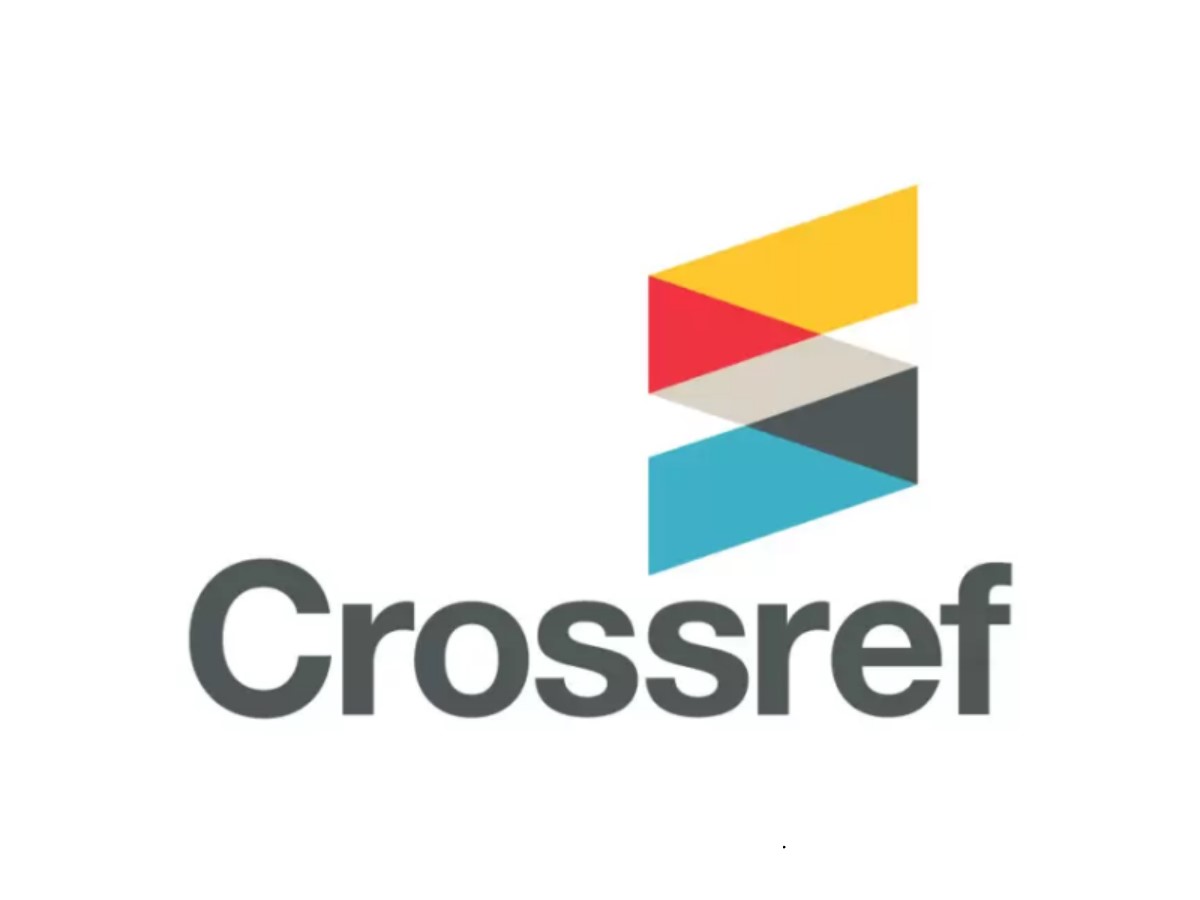MODIFICATION OF TUBE AND RUBBER IN HORIZONTAL SYSTEM ONION-PEELER MACHINE
DOI:
https://doi.org/10.53893/austenit.v14i2.4640Keywords:
modification, machine, onion, peeler, shaftAbstract
This research about how to modify a machine that peels onions. The method used is Reverse engineering. This machine was modified because there is a shortage, level of success onion-peeler machine is still low, with value 43.63%, safety level machine is not sufficient, and the diameter of peeler tube hole is too large, so it is not effective and efficient. Modification made for to improve the efficiency of peeling shallots. The modified part is the rubber and the diameter of the peeler hole. Tube-hole size changed from 16mm to 6mm. will use the Shaft On the stripper tube. The shaft works like a holder for a rubber peeler. There are 11 pieces of peeling rubber. The results of the study showed that the peeled onion was 755 grams after 20 minutes. The machine's actual capacity is 37.75 grams per minute, or 2.26 kg per hour. The machine's production efficiency is 75.5%.
Downloads
References
Aidah, S.N. & Tim Penerbit KBM Indonesia. (2020). Meraup Untung Budidaya Tanaman Bawang Putih dan Bawang Merah.KBM Indonesia. Yogyakarta.
Haqqi, A. (2017). Rancang Bangun Mesin Pengupas Bawang Putih Dengan Sistem Rotary. Skripsi. Bangka.Universitas Bangka Belitung. (http://repository.ubb.ac.id/518/)
Ikram, I., Rudianto, R., Nugroho, A., & Ruslan, R. (2018). Modifikasi Alat Pengupas Bawang Merah. In Seminar Nasional Hasil Penelitian & Pengabdian Kepada Masyarakat (SNP2M).
Nurlina, N., Bahtiar, A.D.M., & Bisono, R.M. (2019). Ppttg Penerapan Mesin Pengupas Bawang Merah Di Desa Sumberjo Kecamatan Gondang Kabupaten Nganjuk. Jurnal Abdimas Gorontalo (Jag), 2(2), 101-106. (https://doi.org/10.30869/jag.v2i2.398).
Perdana, B.P., Saparin, Wijianti, E.S., & Setiawan, Y. (2022). Modifikasi Mesin Pengupas Kulit Bawang Putih Dengan Variasi Tabung Pengupas. Machine, 8(1),51-55. (https://doi.org/10.33019/jm.v8i1.2929).
Pratama F. (2020). Rancang Bangun Mesin Pengupas Bawang Merah Secara Horizontal Dengan Menggunakan Motor Listrik ¼ hp. Skripsi. Bangka.Universitas Bangka Belitung. (http://repository.ubb.ac.id/id/eprint/3740).
Rahayu, E & Berlian, N. (2004). Bawang Merah. Penebar Swadaya. Jakarta.
Ramdani, A., & Munandar, A.. (2020). Perancangan dan Realisasi Mesin Pengupas Bawang Merah. Rekayasa Industri & Mesin (ReTIMS), 2(1), 1-5. (http://183.91.79.105/index.php/ReTIMS/article/view/1048).
Sugandi, W. K., Kramadibrata, M. A. M., Widyasanti, A., & Putri, A. R. (2017). Uji Kinerja dan Analisis Ekonomi Mesin Pengupas Bawang Merah (MPB TEP-0315) [Test Performance and Economical Analysis of Shallot Skin Sheller Machine (MBP TEP-0315)]. Jurnal Ilmiah Rekayasa Pertanian Dan Biosistem, 5(2), 440–451. (https://doi.org/10.29303/jrpb.v5i2.59).
Susanto, T.A., & Yunus, M.Y. (2020). Rancang Bangun Mesin Pengupas Bawang Merah. Prosiding 4th Seminar Nasional Penelitian & Pengabdian Kepada Masyarakat, Politeknik Negeri Ujung Pandang, ISBN : 978-602-60766-9-4, 135-137. (http://jurnal.poliupg.ac.id/index.php/snp2m/article/view/2435).
Tanjung, A.R., Munir, A.P., & Panggabean, S. (2016). Rancang bangun Alat Pengupas Bawang Mekanis. Jurnal Rekayasa Pangan dan Pertanian, 4(2), 231-235. (https://garuda.kemdikbud.go.id/documents/detail/1434637).
Utama, A.M.P., & Munandar, A. (2020). Perancangan Mesin Pengupas Bawang Merah. Rekayasa Industri & Mesin (ReTIMS), 2(2), 29-33. (http://jurnal.usbypkp.ac.id/index.php/ReTIMS/article/view/1367).
Wijaya, W., & Rodiah. (2020). Analisa dan Perancangan Mesin Penguas Bawang Merah Skala Industri Perumahan (Studi Kasus Koperasi Produksi Mitra Kelapa) Sidahurip Kabupaten Pangandaran. ENSAINS, 3(1), 28-33. (https://doi.org/10.31848/ensains.v3i1.301).
Wijianti, E.S., Novriyanda, N., & Saparin, S. (2020). Rancang Bangun Mesin Pengiris Bawang Merah Sistem Mata Pisau Rotari Sumbu Vertikal. AUSTENIT, 12(2), 34-37. (https://doi.org/10.5281/zenodo.4547834).
Downloads
Published
How to Cite
Issue
Section
License
Copyright (c) 2022 Authors and Publisher

This work is licensed under a Creative Commons Attribution-ShareAlike 4.0 International License.
The Authors submitting a manuscript do so on the understanding that if accepted for publication, Authors retain copyright and grant the AUSTENIT right of first publication with the work simultaneously licensed under a Creative Commons Attribution-ShareAlike License that allows others to share the work with an acknowledgment of the work's authorship and initial publication in this journal.
AUSTENIT, the Editors and the Advisory International Editorial Board make every effort to ensure that no wrong or misleading data, opinions or statements be published in the journal. In any way, the contents of the articles and advertisements published in AUSTENIT are the sole responsibility of their respective authors and advertisers.














